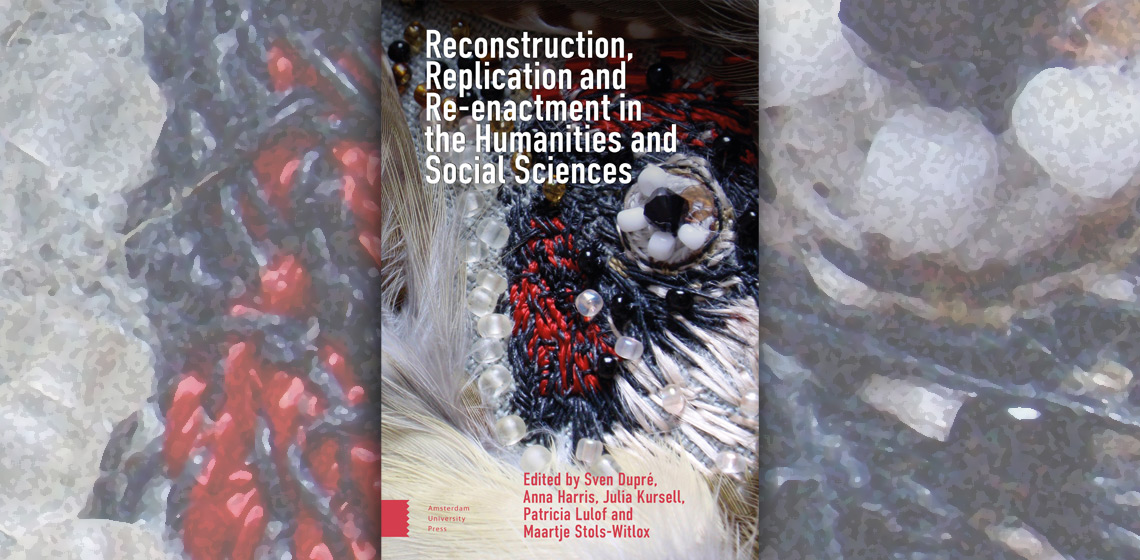The content is published under a Creative Commons Attribution Non-Commercial 4.0 License.
Unreviewed Mixed Matters Article:
Book Review: Reconstruction, Replication, and Re-enactment in the Humanities and Social Sciences

This edited volume by Dupre et al. explores the rising prominence of performative methodologies known as Reconstruction, Re-enactment, Replication, and Reworking (RRR). Resulting from a meeting of the NIAS-Lorentz Program in Leiden, Netherlands in 2015, this collection of papers by academics and practitioners ranges across chronological time (Bronze Age to 19th century) and disciplines (the humanities and social sciences), with a common focus on methodological reflection and the value of RRR in education and public engagement. The entry point into this diverse collection of papers is a succinct and engaging introduction that orientates the reader to the terminology, philosophy, methodology, and application of RRR. The accompanying bibliography provides a helpful resource for those new to RRR. The introduction is followed by ten papers examining the application of RRR in various fields, each with its own bibliography.
In the first paper, Kalshoven explores the act of taxidermy as replication (which, incidentally, lends the cover image to the book). Kalshoven contrasts lifelike taxidermy with the artist’s approach to taxidermy, encouraging us to reflect on the “epistemological and moral frameworks” that drive the conscious and unconscious philosophies underlying our replication and reconstruction projects.
In the second paper, Hilditch outlines a tripartite methodology of archaeological action (experiment, analysis, and visualization) to “shed new light” on the past. Hilditch applies Leroi-Gourhan’s chaîne opératoire (operational sequences) to an assemblage of Bronze Age ceramics from Akrotiri (modern day Santorini, Greece) as a theoretical concept to classify technology as socially embedded performance in “…communities of practice.”
In the third paper, Fidom discusses the way that organ builders reconstruct sound, in an environment where the outcome is never exactly the same each time it is played. Fidom suggests that the organ builders construct (rather than reconstruct) their organs to a preconceived sound ideal, concluding that the outcome (the sound of the organ) is the main driver of a reconstruction in this regard.
The fourth paper, by Kursell and Peters, also explores organ construction and comes to similar conclusions. By means of three case studies they argue that there are two sides to building an organ – the replication of the object and how it is used and perceived - thus underscoring the subtle difference between simply copying something and understanding it through experimental reconstruction.
The fifth paper, by Carlyle, examines the conservation and restoration of oil paintings using Historically Accurate Reconstruction Techniques (HART) as “performative research”. By forcing the conservator to use exact techniques, applications, and materials, the approach requires the researcher to examine all of these aspects in detail, thus raising questions previously unconsidered.
The sixth paper, by Stols-Witlox, also considers the “performative” act in art restoration, developing the idea of retreatability, the reversal of previous restorations, and considering if we can better tell the story of conservation using digital visualization. Stols-Witlox ends on a most interesting question for those who seek to apply RRR: “Which do we consider to be the original? The aged three-hundred-year-old Rembrandt or the research-based ‘perfect’ copy of the painting as it must have left the artist’s studio?”
In the seventh paper, Hagendijk, Heering, Principe, and Dupre explore the use of RRR methods to teach undergraduates and graduates about “the exploratory nature of science” in Europe and the United States. They conclude that engagement with historical instruments, materials, and recipes exposes students to the sensory dimensions of experiments and creates opportunities for interdisciplinary collaborations that bridge the culture gap between the sciences and the humanities.
The eighth paper, by Vergunst, uses an anthropological lens to examine psychogeography (the study of the influence of the environment on the mind or on behavior), concluding that any act of replication should be “an attentive, place-aware gesture”. Vergunst robustly challenges the normative distinction between original and copy, encouraging us to question the “widely-held distinction between creativity, originality, and authenticity… and copying.”
In the ninth paper in the volume, Lulof applies the chaîne opératoire approach to the use of 3D technologies in the reconstruction of 6th century BC Acquarossa (Italy). Lulof demonstrates how 3D reconstruction allows uncertainty and change over time to be recorded, recommending digital publication as a new format that supports the perpetual evaluation and development of reconstructions.
In the tenth and final paper, Sibum explores the notion of “historically embodied gestural knowledge”. By reconstructing historically accurate objects of an experiment (in this case James Joule’s paddle-wheel), and then performing said experiment, Sibum aims to gain insight into scientific practice and change.
This volume’s fundamental strength is its encouragement to the reader to think critically and broadly about the role of RRR in understanding and engaging with the past. However, the very breadth of the approach can feel overwhelming. While the introduction does an admirable job of orientating the reader, a concluding chapter that draws together the complex threads of RRR and points our future directions in the field is perhaps a missing component. On the other hand, the two indexes at the end of the volume are extremely useful aids to the reader: one focuses specifically on RRR terminology and the other on more general keywords. Ultimately, this volume is a valuable addition to the bookshelves of both academics and practitioners in a wide range of fields, from the sciences to the humanities.
Book information:
Dupré, S., Harris, A., Kursell, J., Lulof, P., and Stols-Witlox, M. 2020. Reconstruction, Replication, and Re-enactment in the Humanities and Social Sciences. Amsterdam University Press B.V., Amsterdam.
ISBN 978 94 6372 800 3
Keywords
Country
- the Netherlands

